
Wine Culture and Information since 2002 - Volume 22
 Wine Culture and Information since 2002 - Volume 22 |
|
Issue 117, April 2013 |
Contents |
|
|
What I Have Learnt from Wine |
|
It is now more than twenty years I am into wine. Everything started as an amatorial passion, maybe fed by the fact I grew up in a culture based on wine, just like most of the people living in Italy or in countries where the beverage of Bacchus is being historically produced. My first contact with wine - of which I have memory - was not exactly about wine, but the magic of the place where it gets its origin: vineyard. The very first “wine authority” I met was my grandfather, who also was appreciated for his talent and skill in grafting plants and trees. As it was very common in the past, something representing an absolutely normal and indispensable fact for whoever was cultivating a land, my grandfather made wine. He made wine solely for personal consumption, like most of those who were making wine in past times. My grandfather was very proud of the wine he was making from the grapes of his vineyard, indeed, he was also very proud of his vineyard in which he spent a lot of time in taking care of it. The first memories I have of the vineyard, of my grandfather's vineyard, are two moments I remember with vivid emotion: harvesting and the day he brought me in the vineyard to help him. Harvesting was a real feast, in particular for us kids - and we were a lot - who were waiting that occasion in order to spend some time together, in the beginning by pretending to help adults to harvest grapes, then to get together, after about one hour, to play and to make some pranks. It was a feast, a real party beginning early in the morning and ending at night, all together harvesting the grapes and making wine. Everything was happening under the strict supervision of my grandfather who was scrupulously following every phase of the day, from how the grape was harvested and how it was brought to the winery, up to the moment the must was poured in the cask. He was very proud of his vineyard and of the wine which would born some months later: despite he made wine with the pleasure of drinking his wine and to offer it to friends and relatives, he was however very exacting both in the vineyard and in the winery. The second memory is about the day my grandfather brought me to the vineyard to help him replacing a vine which was dead. I don't exactly remember my age at that time, I am however sure I was not more than seven. We dug a hole and then covered with earth a shoot of the next vine - using the layering technique - and, with my wonder, he told me that by using that method a vine could replicate itself and give life to a new plant. That vineyard has been then passed to his son - my uncle - and today, also for the respect of two lives who have passionately been committed to that vineyard, to that land, to those vines and their wine, continues its story through the work of my cousins and mine. We try, for what we can, to take care of that vineyard and to make wine, of course, for an absolutely personal consumption. I believe the experience of walking in the vineyard of my grandfather and then to make wine, is an incredible chance for me who write about wine and taste them every day in order to understand better the nectar of Bacchus. Vineyard and winery are a remarkable school of life, both teach you how to listen and, more important, to respect. In particular, you understand the efforts it takes, however noble, to cultivate a vineyard and to make wine: a challenge made of risks, endless concerns while watching the sky, the soil and vines, moments repeating, always renewed, always new, every year. And every year it is a magic and a wonder repeating. I am not going, of course, to celebrate my passion for the vineyard and wine making - ours, I would say, as I make wine together with my cousins - in particular for the fact I am aware we make an amatorial wine and for personal consumption, for the joy to be shared with friends. I however believe that understanding how wine is made and what happens in the vineyard - although in a home and amatorial context - represents for me a remarkable chance in order to understand my job better, what I write about wine. Then listening. Listening not only to bottles - every bottle - but also to what it is being poured on glasses, as well as listening to those who make the nectar filling the glass with emotions, either good or bad. Everyone is capable of telling enchanting stories, either for good or bad, and what I learnt is that wine strongly reflects the personality of the one who makes it. Passionate persons will make wines of equal passion; dishonest and not loyal persons give to their wine the very same qualities, making wines with no soul, stripped of every sincere personality. I do not want, of course, to glorify a specific style of wine making: thanks to wine I also understood that the ones capable of making quality wines and rich of emotions, do not need to hide their mediocrity behind a label, behind empty words or convenient religions. From wine I also learnt the hated technology - something which allowed everyone to improve their wines, to better understand the wine making process - is not bad at all. What is bad is the use you make of it, better to say, the abuse, something exclusively associated to the morality of each producer. The bad faith or dishonesty of a producer makes no difference to me: the labels and the pathetic farce used to support their wines simply worsen the situation, no matter the wine making “belief” used for production. From wine I understood that, just like people, animals and plants, each one of them, every bottle, every glass, has an unrepeatable story to tell and which is always worth to listen to, even in case I do not understand it or agree on it. This is something I learnt, before than wine, from tea, an extraordinary beverage to which I dedicated decades of my life - a passion still alive today - both as a matter of study, as well as a Master of life. Of course, wine too is a Master of my life: from it I learnt what tea cannot teach me, and of course, from tea I learnt what wine cannot teach me. From wine I also learnt that every glass, every sip, is capable of giving you the awareness, in a second, the journey of the understanding of the beverage of Bacchus never ends. Every sip always adds something new to your knowledge, while being aware - at the same time - that also to ignorance is added something new and a worrying emptiness to fill, which will unavoidably brings other and vast emptiness to be filled. Today, although I tasted the modest quantity of about 15,000 wines - more than a quarter of them is part of DiWineTaste Wine Guide - I am aware of the fact I have a lot to learn, too many things to be understood and lived. From wine I also learnt respect comes before anything else. Respect for the ones who make wine, their efforts and their passion, respect comes before their wines, even in case it is not understood. This is something we should always remember when we talk and write about wine. In this sense, I also understood there are some who use wine for celebrating themselves and to believe they are everything and above everything: wine taught me to feel pity for the nothingness of such vacuous subjects. Wine also taught me it is something be shared, as a high and noble act, because good stories, pleasing moments, are empty and useless in case they are not shared with others. I am confident and aware wine will still teach me a lot more. Antonello Biancalana
|
||||
Wine Making Technology and TastingTechnology, the application of a technique and a method, allows the production of wines of higher quality while unavoidably affecting its sensorial characteristics |
|
Technique and technology in vineyard and in winery are subjects that since a long time - since some decades, maybe since ever - start the fire on wine lovers and producers debates. For some both technique and technology are to be considered as the absolute negation of wine and its capability of expression, frequently associated, with disregard, to the concept of adulteration and to the worst industrialization of wine. On the contrary, some consider technology in a more pragmatic way, recognizing to it the basis of knowledge and wine making progress, a scientific and critical way in order to improve wine quality while limiting, or by completely removing, the risks of the formation of faults and negative factors. Any method or principle applied to the work of man can be defined as technique, also in those contexts in which this term is widely criticized. According to an etymological point of view, the word “technique” definitely has a noble origin. It comes from the Greek téchne meaning art, that is the capability of man to do things by a conscious application and use of rules allowing the realization of an activity, both of practical nature as well as of intellectual nature. In other words, it defines the capability and the expression of man's talent in every context in which he interacts, including nature, including wine. Also the word technology comes from Greek and precisely from the word téchne to which is added logos, meaning discourse, therefore its meaning is “thematic exposition of an art”. Technology, in its wider sense, is the definition of rules and methods scientifically and artistically making a subject, by allowing not only its understanding but also the conscious application and use. The 1900 has undoubtedly been the century which mainly contributed to wine making technology. In fact, thanks to the use of technique and knowledge, which progress and science discovered also in other contexts, the phenomena taking place during wine production, as well as their interactions, have been understood in a scientifically and methodical way. This extraordinary journey begins after 1850, when the great French scientist Louis Pasteur - between 1861 and 1862 - for the first time explains and in a scientifically way, the process of alcoholic fermentation by identifying the activity of yeast. His fundamental studies on microbiology have also allowed the understanding of the reasons and remedies to many of the faults happening in wine. For the sake of completeness, it should also be mentioned the great contribution of Louis Pasteur on beer production, whom studies and the application of the very same discoveries, have allowed him to explain chemical, physical and biological phenomena of wine making. Before Louis Pasteur's discoveries, wine production was mainly made by the application of empirical methods and traditionally reliable from a wine making point of view, fruit of experiences and observation of the past. These methods were in fact applied in function of their “historical” and proved results, however they did not know, or did not completely know, the principles determining their efficiency on wine. It should be considered, for example, the word “fermentation”, coming from Latin fervere, meaning “to boil”, therefore, in past times, “fermentation” was considered as a sort of “boiling”. The reason comes from the observation of the must during fermentation which recalled the tumult of boiling water, a concept also strengthened by the fact this process also increases the temperature of the must. Today we know, also thanks to Louis Pasteur, the must does not boil at all and the tumult is the result of yeast's biological activity. However, in some parts of Italy, the alcoholic fermentation is still defined as a “boiling”, precisely, it is said the “must is boiling”.
Wine undoubtedly is the product of technique, expression of the talent and art of man with the fundamental and irreplaceable help of Nature and environment. Without technique, without knowing the wine making and viticultural methods, of every nature and form, wine could not exist, likewise, nothing of the expression of man's talent could not exist as well. Even those romantic and traditional practices, which are usually associated to natural practices, are the result of techniques and their application. Every time man interacts with natural processes, from vineyard to bottle, he is simply using a method and a technique, of scientific or empirical nature, it makes no difference. The discriminating factor, of course, is how the technique is being used, the borderline between the reasonable and meaningful use and the abuse. A concept valid for everything with no exception: it is the use and abuse to define goodness, honesty and decency of things, thoughts and behaviors. While noticing, in any way, wine does not exist in nature and it is the result of the fundamental intervention of man, by interacting with Nature and environment, every technique used for the production of the nectar of Bacchus affects the organoleptic profile of wine. From wine appearance to the sensation which can be perceived in the mouth after swallowing, the measure and mode of technical intervention from man have the property of shaping every single sensorial aspect of wine. How the vineyard is cultivated, how the vine is pruned, how grape is crushed and how the must is fermented, how the wine is racked and bottled, how the wine is served, are all examples of the use of techniques which unavoidably affects the organoleptic qualities of wine and how they are being perceived by the organs of sense. It could be mistakenly believed wine is just technique and this would be absolutely wrong. Wine is not technique only: it mainly is the result of the sensitivity, morality, honesty, culture and fairness of a producer and how he uses every single technique in the respect of Nature, vineyard and environment. Technique is the tool used by man to interact with the processes of cultivation of vine and the production of wine. Technique, in fact, gives the essential tools allowing the prevention of vine diseases and their development, as well as providing a cure for wine faults. Nature, of course, plays an irreplaceable and unrepeatable role, however it is the technique allowing its expression through wine. Every technique, in fact, has the property of shaping wine into a specific style or expression and, despite many of them are fundamental for wine stabilization, they unavoidably end up modifying the organoleptic profile. Defining the border between use and abuse of a technique is extremely difficult and useless, as this is strongly associated to the philosophy and belief of produces and consumers. For example, the use of the so called selected yeast is considered by some a sound practice to get a quality wine, for others it is seen, not only as the opposed expression, but also as a sign of adulteration and standardization. Yeast, there is no doubt about this, strongly contributes to the organoleptic characteristics of wine and, no matter are being used selected yeast or the ones naturally found in grape skins, their activity is strongly affected by technical factors taking place in the winery. As it is commonly known, Saccharomyces Cerevisiae is the yeast species mainly responsible for alcoholic fermentation of wine. It is not the only species, of course, but it is the one to be mainly favored during alcoholic fermentation. The result of fermentation is the product of the work of many species, in particular in case the producer decides not to use selected yeast which are exclusively made from Saccharomyces Cerevisiae. This yeast species is naturally found in grape skins, as well as in the air, just like any other yeast species. One of the technical factors determining the activity of yeast, of any species, is temperature. Temperature control, a technique widely used in wine making, both by natural producers as well as by wine industry, has the property of strongly affecting the activity of yeast, while working - as a matter of fact - a selection, therefore shaping the organoleptic profile of a wine towards a specific character. Sulfur dioxide, widely used not only in wine making but also in food industry, is another element strongly criticized in the world of wine. While noticing this chemical element is naturally produced during alcoholic fermentation - in a variable quantity from 6 to 40mg per liter, according to the type of yeast and wine making conditions - it should also be noticed the excess can be cause of health disorders. Sulfur dioxide in wine however offers undeniable benefits, also according to a sensorial point of view. It should in fact be noticed sulfur dioxide, besides offering a good protection to wine, making it more stable, used in right quantity favors the expression of wine aromas. Like already said, the excess of sulfur dioxide can cause health disorders, in particular in subjects sensitive to this substance, it however affects the wine with an evident smell of sulfur, something which can also completely destroy both olfactory and gustatory quality. Obviously there is an undeniable and substantial difference between use and abuse, between honesty and dishonesty, it should however be noticed that, technically speaking, a wine can be corrected and, in a certain way, shaped according to a desired style. In the winery, a wine can be corrected on every organoleptic aspect, from appearance to taste, there is no wine making aspect which cannot be changed. It should be said, for the sake of truth, although in a winery can be frequently made miracles, it is however undeniable from quality grape it is very easy to make a great wine: in this case the intervention of man and technology can, in some cases, destroy and abuse the wonderful matter offered by Mother Nature. The abuse of technology can however be useful in case of grape of mediocre or bad quality: despite it is not however possible, in this case, to get a great wine, it is possible to greatly improve it and to make it better than what it could not be. Acidity and astringency, for example, can be corrected in the winery both in case of deficiency as well as in case of excess. Moreover, also the deficiency of sugar in the must can be corrected, either by adding a concentrated must (in some countries, but not in Italy, it is also permitted the adding of table sugar) as well as by removing the excess, which could bring to an excessive production of alcohol. For the sake of completeness, it must be said this correction are permitted by law, therefore - at least from a legal point of view - they cannot be considered as adulteration but as enological corrective practices. In every case, this kind of interventions substantially affect the organoleptic qualities of wine, as well as balance and perception of each stimulus. By using this kind of correction, it is possible to completely change the nature and character of a wine. It could be considered as a sort of “make up” in order to hide imperfections and deficiencies, frequently result of a wrong viticulture or however not respectful for vineyard and environment, or in case of particularly unfavorable vintages. The same principle is applied to the use of cask and wood containers. While saying the cask is a precious tool for wine production, its abuse, or better to say, its wrong use, has the capability of distorting the organoleptic qualities of a wine. It must be said not all the grapes, not all the territories, are suited for the use of cask or certain types of casks. First of all, wine must have been produced with the aim of standing to the aging in cask, a choice which is strongly affected by viticultural practices and grape varieties. Filtering - a mechanical operation allowing the removal of solid substances, also in order to avoid sediments in the bottle, not always liked by consumers - if it is true it gives a more biologically stable wine and with an impeccable appearance, it can affect organoleptic qualities. Filtering, according to its “rigour”, as a matter of fact, strips some substances off the wine and which could represent a characterizing factor, both in aromas as well as in taste.
|
||||||||||||
Wines of the Month |
|
|
|
Score legend Prices are to be considered as indicative. Prices may vary according to the country or the shop where wines are bought |
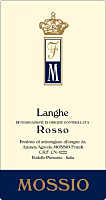
|
|
Langhe Rosso 2009 |
|
| Mossio (Piedmont, Italy) | |
| Grapes: Barbera (40%), Nebbiolo (40%), Dolcetto (20%) | |
| Price: € 15.50 | Score: |
| This Langhe Rosso shows an intense ruby red color and nuances of ruby red, little transparency. The nose reveals intense, clean, pleasing, refined and elegant aromas which start with hints of black cherry, plum and dried violet followed by aromas of blueberry, blackberry, vanilla, raspberry, tobacco, chocolate, dried rose, mace and menthol. The mouth has good correspondence to the nose, a properly tannic attack and however balanced by alcohol, good body, intense flavors, pleasing crispness. The finish is persistent with flavors of black cherry, plum and blueberry. This Langhe Rosso ages for 12 months in cask. | |
| Food Match: Roasted meat, Braised and stewed meat, Hard cheese | |

|
|
Dolcetto d'Alba Bricco Caramelli 2011 |
|
| Mossio (Piedmont, Italy) | |
| Grapes: Dolcetto | |
| Price: € 11.50 | Score: |
| Dolcetto d'Alba Bricco Caramelli shows a deep ruby red color and nuances of purple red, little transparency. The nose reveals intense, clean, pleasing, refined and elegant aromas which start with hints of cherry, blackberry and plum followed by aromas of violet, raspberry, strawberry, cyclamen, blueberry, peach, almond, geranium and anise. The mouth has good correspondence to the nose, a properly tannic attack and however balanced by alcohol, good body, intense flavors, pleasing crispness. The finish is very persistent with long flavors of cherry, plum and blackberry. Dolcetto d'Alba Bricco Caramelli ages in steel tanks. | |
| Food Match: Cold cuts, Pasta with meat and mushrooms, Roasted white meat, Sauteed meat | |
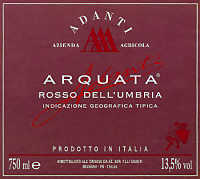
|
|
Arquata Rosso 2006 |
|
| Adanti (Umbria, Italy) | |
| Grapes: Cabernet Sauvignon (40%), Merlot (40%), Barbera (20%) | |
| Price: € 13.50 | Score: |
| Arquata Rosso shows an intense ruby red color and nuances of garnet red, little transparency. The nose denotes intense, clean, pleasing, refined and elegant aromas which start with hints of black cherry, black currant and dried violet followed by aromas of blueberry, plum, vanilla, tobacco, chocolate, cinnamon, mace and eucalyptus. The mouth has good correspondence to the nose, a tannic attack and however balanced by alcohol, full body, intense flavors, agreeable. The finish is persistent with flavors of black cherry, black currant and plum. Arquata Rosso ages in cask and barrique for 24 months followed by 6 months of aging in bottle. | |
| Food Match: Game, Roasted meat, Stewed and braised meat, Hard cheese | |
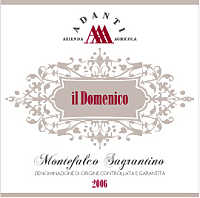
|
|
Sagrantino di Montefalco Il Domenico 2006 |
|
| Adanti (Umbria, Italy) | |
| Grapes: Sagrantino | |
| Price: € 27.00 | Score: |
| Sagrantino di Montefalco Il Domenico shows an intense ruby red color and nuances of garnet red, little transparency. The nose reveals intense, clean, pleasing, refined and elegant aromas which start with hints of blackberry, plum and black cherry followed by aromas of violet, blueberry, vanilla, tobacco, chocolate, mace, leather, pink pepper and menthol. The mouth has excellent correspondence to the nose, a tannic attack and however balanced by alcohol, full body, intense flavors, agreeable. The finish is very persistent with long flavors of blackberry, plum and black cherry. Sagrantino di Montefalco Il Domenico ages for 30 months in cask followed by 24 months of aging in bottle. | |
| Food Match: Game, Roasted meat, Braised and stewed meat, Hard cheese | |
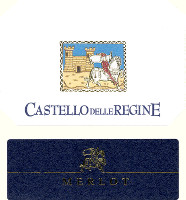
|
|
Merlot 2005 |
|
| Castello delle Regine (Umbria, Italy) | |
| Grapes: Merlot | |
| Price: € 33.00 | Score: |
| This Merlot shows a deep ruby red color and nuances of garnet red, little transparency. The nose reveals intense, clean, pleasing, refined and elegant aromas which start with hints of black currant, black cherry and plum followed by aromas of blueberry, violet, vanilla, chocolate, coffee, tobacco, mace, pink pepper and eucalyptus. The mouth has good correspondence to the nose, a tannic attack and however balanced by alcohol, full body, intense flavors, pleasing roundness. The finish is persistent with flavors of black currant, black cherry and plum. This Merlot ages in barrique for 12 months followed by 24 months of aging in bottle. | |
| Food Match: Game, Stewed and braised meat, Roasted meat, Hard cheese | |
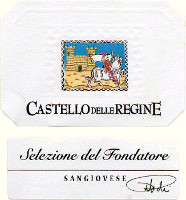
|
|
Selezione del Fondatore 2004 |
|
| Castello delle Regine (Umbria, Italy) | |
| Grapes: Sangiovese Grosso | |
| Price: € 22.00 | Score: |
| Selezione del Fondatore shows an intense ruby red color and nuances of garnet red, little transparency. The nose denotes intense, clean, pleasing, refined and elegant aromas that start with hints of black cherry, plum and dried violet followed by aromas of blackberry, blueberry, vanilla, tobacco, chocolate, cinnamon, leather, mace and menthol. The mouth has good correspondence to the nose, a properly tannic attack and however balanced by alcohol, full body, intense flavors, agreeable. The finish is persistent with flavors of 18 months in barrique followed by 36 months of aging in bottle. | |
| Food Match: Game, Roasted meat, Braised and stewed meat, Hard cheese | |
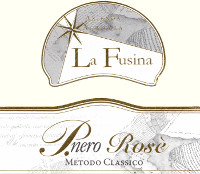
|
|
Metodo Classico P.Nero Rosé Extra Brut 2010 |
|
| La Fusina (Piedmont, Italy) | |
| Grapes: Pinot Nero | |
| Price: € 18.00 | Score: |
| Metodo Classico P.Nero Rosé Extra Brut shows a pale cherry pink color and nuances of cherry pink, transparent, fine and persistent perlage. The nose denotes intense, clean, pleasing and refined aromas that start with hints of cherry, raspberry and strawberry followed by aromas of apple, yeast, tangerine and cyclamen. The mouth has good correspondence to the nose, a crisp and effervescent attack, however balanced by alcohol, good body, intense flavors, agreeable. The finish is persistent with flavors of cherry, pink and strawberry. Metodo Classico P.Nero Rosé Extra Brut referments in bottle on its lees for more than 9 months. | |
| Food Match: Pasta and risotto with mushrooms and fish, Sauteed white meat, Dairy products | |

|
|
Dogliani Superiore Cavagné 2010 |
|
| La Fusina (Piedmont, Italy) | |
| Grapes: Dolcetto | |
| Price: € 10.00 | Score: |
| Dogliani Superiore Cavagné shows an intense ruby red color and nuances of ruby red, little transparency. The nose denotes intense, clean, pleasing and refined aromas that start with hints of cherry, plum and violet followed by aromas of raspberry, blueberry, geranium and blackberry. The mouth has good correspondence to the nose, a properly tannic attack and however balanced by alcohol, good body, intense flavors, pleasing crispness. The finish is persistent with flavors of cherry, plum and raspberry. Dogliani Superiore Cavagné ages for 12 months in steel tanks followed by 6 months of aging in bottle. | |
| Food Match: Stuffed pasta, Sauteed meat with mushrooms, Broiled meat and barbecue | |

|
|
Rosso di Montalcino 2010 |
|
| Mastrojanni (Tuscany, Italy) | |
| Grapes: Sangiovese | |
| Price: € 15.00 | Score: |
| This Rosso di Montalcino shows a brilliant ruby red color and nuances of ruby red, moderate transparency. The nose reveals intense, clean, pleasing and refined aromas which start with hints of black cherry, plum and violet followed by aromas of blueberry, raspberry, vanilla, geranium, carob and cyclamen. The mouth has good correspondence to the nose, a properly tannic attack and however balanced by alcohol, good body, intense flavors, pleasing crispness and roundness. The finish is persistent with flavors of black cherry, plum and raspberry. This Rosso di Montalcino ages in cask for 7 months followed by 3 months of aging in bottle. | |
| Food Match: Stuffed pasta, Broiled meat and barbecue, Roasted meat | |
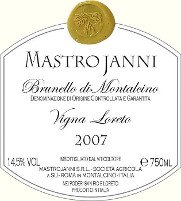
|
|
Brunello di Montalcino Vigna Loreto 2007 |
|
| Mastrojanni (Tuscany, Italy) | |
| Grapes: Sangiovese | |
| Price: € 45.00 | Score: |
| Brunello di Montalcino Vigna Loreto shows a brilliant ruby red color and nuances of brick red, moderate transparency. The nose denotes intense, clean, pleasing, refined and elegant aromas which start with hints of black cherry, plum and violet followed by aromas of blueberry, raspberry, blackberry, vanilla, cocoa, licorice, mace, cinnamon, tobacco and menthol. The mouth has good correspondence to the nose, a properly tannic attack and however balanced by alcohol, full body, intense flavors, pleasing crispness. The finish is persistent with flavors of black cherry, plum and blackberry. Brunello di Montalcino Vigna Loreto ages for 36 months in cask followed by 8 months of aging in bottle. | |
| Food Match: Game, Roasted meat, Braised and stewed meat, Hard cheese | |

|
|
Lambrusco Brut |
|
| Lusvardi (Emilia Romagna, Italy) | |
| Grapes: Lambrusco Salamino, Lambrusco Grasparossa | |
| Price: € 8.00 | Score: |
| This Lambrusco Brut shows a brilliant ruby red color and nuances of ruby red, moderate transparency, fine and persistent perlage. The nose denotes intense, clean, pleasing and refined aromas which start with hints of cherry, plum and blueberry followed by aromas of raspberry, strawberry, blackberry and violet. The mouth has good correspondence to the nose, an effervescent and properly tannic attack, however balanced by alcohol, good body, intense flavors, pleasing crispness. The finish is persistent with flavors of cherry, plum and blueberry. Lambrusco Brut ferments in closed tank. | |
| Food Match: Cold cuts, Pasta and risotto with meat, Sauteed white meat, Dairy products | |

|
|
Lambrusco Grato |
|
| Lusvardi (Emilia Romagna, Italy) | |
| Grapes: Lambrusco Salamino, Lambrusco Grasparossa | |
| Price: € 9.00 | Score: |
| Lambrusco Grato shows an intense ruby red color and nuances of ruby red, little transparency, fine and persistent perlage. The nose reveals intense, clean, pleasing and refined aromas which start with hints of cherry, blackberry and plum followed by aromas of raspberry, yeast, violet, rose and strawberry. The mouth has good correspondence to the nose, a properly tannic and effervescent attack, however balanced by alcohol, good body, intense flavors, pleasing crispness. The finish is persistent with flavors of cherry, blackberry and plum. Lambrusco Grato referments in bottle on its lees and it is not disgorged. | |
| Food Match: Stuffed pasta, Sauteed meat, Cheese | |

|
|
Valpolicella Ripasso Col de la Bastia 2009 |
|
| Fattori (Veneto, Italy) | |
| Grapes: Corvina (65%), Corvinone (15%), Rondinella (10%), Altre Uve (10%) | |
| Price: € 28.00 | Score: |
| Valpolicella Ripasso Col de la Bastia shows an intense ruby red color and nuances of ruby red, little transparency. The nose reveals intense, clean, pleasing and refined aromas which start with hints of black cherry, blackberry and violet followed by aromas of blueberry, plum, vanilla, tobacco, chocolate, mace, cinnamon and menthol. The mouth has good correspondence to the nose, a properly tannic attack and however balanced by alcohol, good body, intense flavors, agreeable. The finish is persistent with flavors of black cherry, blackberry and plum. Valpolicella Ripasso Col de la Bastia ages in cask. | |
| Food Match: Roasted meat, Stewed and braised meat with mushrooms, Broiled meat and barbecue | |

|
|
Amarone della Valpolicella 2007 |
|
| Fattori (Veneto, Italy) | |
| Grapes: Corvina (65%), Corvinone (15%), Rondinella (10%), Altre Uve (10%) | |
| Price: € 50.00 | Score: |
| This Amarone della Valpolicella shows an intense ruby red color and nuances of garnet red, little transparency. The nose reveals intense, clean, pleasing, refined and elegant aromas which start with hints of blackberry, black cherry and plum followed by aromas of dried violet, blueberry, tobacco, vanilla, chocolate, cinnamon, mace, leather and menthol. The mouth has excellent correspondence to the nose, a tannic attack and however balanced by alcohol, full body, intense flavors, pleasing roundness. The finish very persistent with long flavors of blackberry, plum and black cherry. This Amarone della Valpolicella ages for 36 months in cask. | |
| Food Match: Game, Braised and stewed meat, Roasted meat, Hard cheese | |
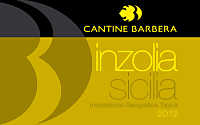
|
|
Inzolia 2012 |
|
| Cantine Barbera (Sicily, Italy) | |
| Grapes: Inzolia | |
| Price: € 7.00 | Score: |
| This Inzolia shows a brilliant greenish yellow color and nuances of greenish yellow, very transparent. The nose denotes intense, clean and pleasing aromas that start with hints of pear, peach and pineapple followed by aromas of apple, broom and plum. The mouth has good correspondence to the nose, a crisp attack and however balanced by alcohol, good body, intense flavors, agreeable. The finish is persistent with flavors of apple, pear and peach. This Inzolia ages in steel tanks. | |
| Food Match: Fried fish, Risotto with fish, Sauteed fish | |

|
|
La Bambina 2012 |
|
| Cantine Barbera (Sicily, Italy) | |
| Grapes: Nero d'Avola | |
| Price: € 7.00 | Score: |
| La Bambina shows a brilliant onion skin pink and nuances of onion skin pink, transparent. The nose denotes intense, clean and pleasing aromas that start with hints of cherry, raspberry and blackberry followed by aromas of strawberry, cyclamen and plum. The mouth has good correspondence to the nose, a crisp attack and however balanced by alcohol, good body, intense flavors, agreeable. The finish is persistent with flavors of cherry, raspberry and blackberry. La Bambina ages in steel tanks. | |
| Food Match: Meat and fish appetizers, Pasta with fish, Sauteed meat, Stewed fish | |
News |
|
In this section are published news and information about events concerning the world of wine and food. Whoever is interested in publishing this kind of information can send us a mail to our address.
|
AquavitaeReview of Grappa, Distillates and Brandy |
|
|
| Distillates are rated according to DiWineTaste's evaluation method. Please see score legend in the "Wines of the Month" section. |

|
|
Grappa di Poggio ai Chiari |
|
| Colle Santa Mustiola (Tuscany, Italy) | |
| (Distiller: Distillerie Peroni Maddalena) | |
| Raw matter: Pomace of Sangiovese and Colorino | |
| Price: € 26.00 - 50cl | Score: |
| Grappa di Poggio ai Chiari is colorless, limpid and crystalline. The nose denotes intense, clean and pleasing aromas of plum, hazelnut, black cherry and violet with perceptible alcohol pungency. In the mouth has intense flavors with alcohol pungency which tends to dissolve rapidly, good correspondence to the nose, pleasing roundness, balanced sweetness. The finish is persistent with flavors of plum, black cherry and hazelnut. This grappa is produced with discontinuous steam operated alembic still. Alcohol 42%. | |
Wine Parade |
|
|
| The best 15 wines according to DiWineTaste's readers. To express your best three wines send us an E-mail or fill in the form available at our WEB site. |
| Rank | Wine, Producer | |
|---|---|---|
| 1 |
| Avvoltore 2009, Moris Farms (Italy) |
| 2 |
| Trento Talento Brut Riserva 2007, Letrari (Italy) |
| 3 |
| Franciacorta Pas Dosé Récemment Dégorgé 2006, Cavalleri (Italy) |
| 4 |
| San Leonardo 2006, Tenuta San Leonardo (Italy) |
| 5 |
| Sagrantino di Montefalco Collepiano 2007, Arnaldo Caprai (Italy) |
| 6 |
| Confini 2007, Lis Neris (Italy) |
| 7 |
| Adarmando 2009, Tabarrini (Italy) |
| 8 |
| Trento Brut Riserva Methius 2006, Dorigati (Italy) |
| 9 |
| Batàr 2008, Querciabella (Italy) |
| 10 |
| Camartina 2008, Querciabella (Italy) |
| 11 |
| Brunello di Montalcino 2007, Donatella Cinelli Colombini (Italy) |
| 12 |
| Verdicchio dei Castelli di Jesi Classico Superiore Podium 2010, Garofoli (Italyy) |
| 13 |
| Gran Masetto 2007, Endrizzi (Italy) |
| 14 |
| Amarone della Valpolicella Classico Capitel Monte Olmi 2007, Tedeschi (Italy) |
| 15 |
| Offida Rosso Il Grifone 2006, Tenuta Cocci Grifoni (Italy) |
| |||||||
Privacy Policy | |||||||


| Copyright © 2002-2024 Antonello Biancalana, DiWineTaste - All rights reserved |
| All rights reserved under international copyright conventions. No part of this publication and of this WEB site may be
reproduced or utilized in any form or by any means, electronic or mechanical, without permission in writing from DiWineTaste. |